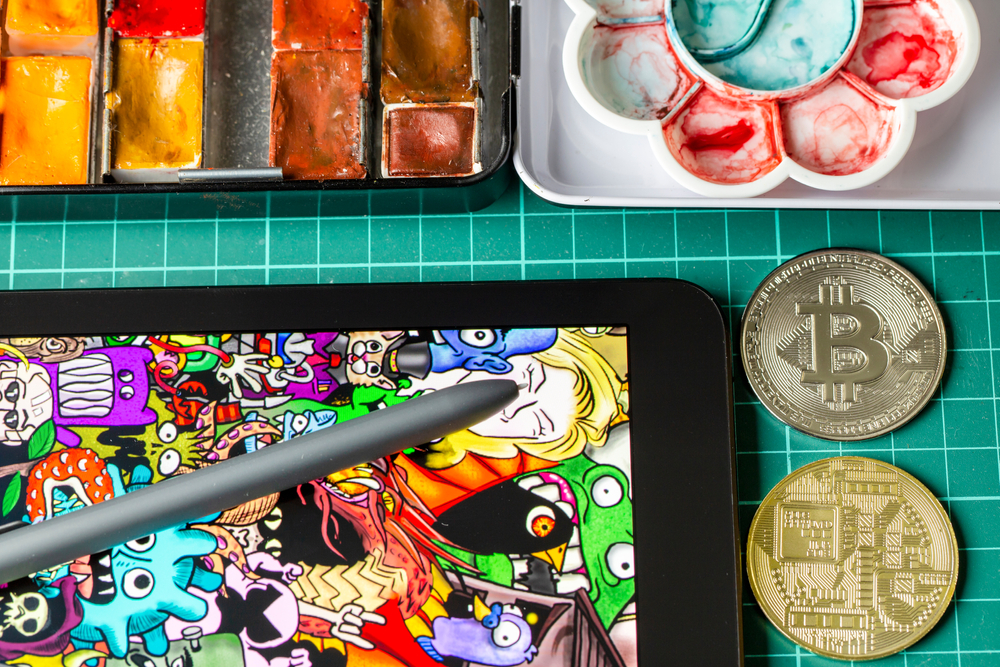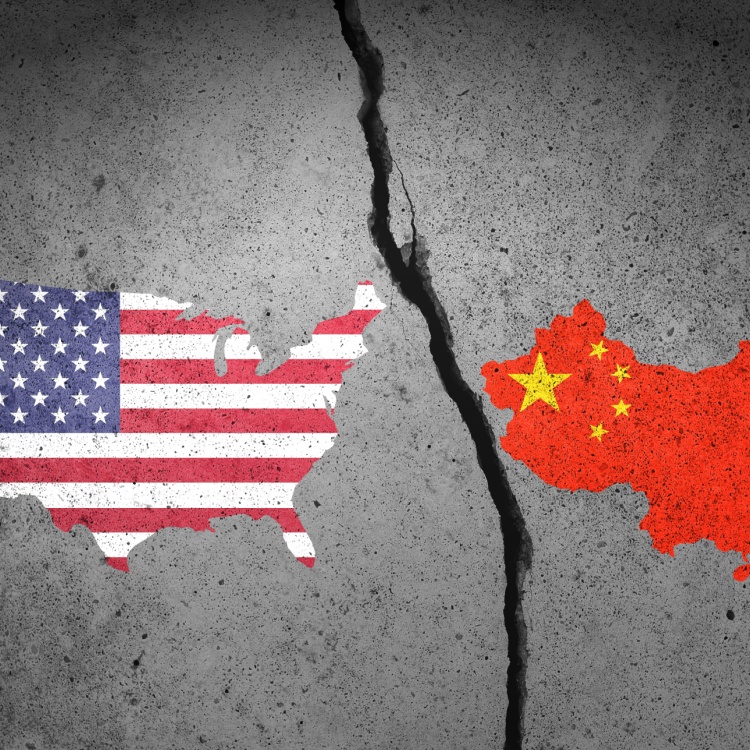The NFT Art Market: Boom or Bubble?

NFTs or non-fungible tokens made big headlines and big bucks for the art world. Find out how it could transform the way art is created, bought, sold, and valued.
2021 was a banner year for NFTs, making waves in the global art industry. What does this technology mean for artists and collectors?
What are NFTs?
NFT stands for non-fungible token. In economics, a fungible asset can be substituted or exchanged with assets of the same value. An example of a fungible asset is currency. When you exchange ten one-dollar bills for a single ten-dollar bill, the value of your money remains the same despite being in a different form.
Non-fungible assets are the opposite. NFTs are unique, one-of-a-kind digital assets that are verified and stored using blockchain technology. In this digital database, encrypted information on a digital asset is stored across a network of computers: who owns it, who sold it, and when it was sold.
NFTs and art
For collectors, NFTs verify the sovereignty and provenance of a digital artwork, establishing that it is not a forgery or stolen art. For artists, it gives them more control over their work. Before this technology, anything that you created and put up on the internet could be infinitely copied. But in the blockchain, you can control the number of versions of a digital object, creating a record of scarcity. In addition, artists can include royalties in the smart contracts.
“The provable scarcity and authenticity of NFTs really allow artists to control their body of work and follow it through its whole life cycle,” artist Blake Jamieson shared with CNBC. “Because not only is the artist paid on the initial sale, but because everything is tracked on the blockchain, when a secondary sale happens, I’m actually getting a royalty paid back as the creator. That’s something that doesn’t really happen in the physical art market.”
Big headlines and big bucks
Interest in NFTs has skyrocketed thanks to recent multimillion-dollar sales. On the 10th anniversary of Nyan Cat last February 2021, creator Chris Torres remastered the original animation. The crypto art sold for more than USD 500,000.
Last March, Christie’s became the first auction house to sell a digital-only artwork as an NFT. EVERYDAYS: THE FIRST 5000 DAYS, a digital collage by Beeple, sold for a record-breaking USD 69 million.
"Artists have been using hardware and software to create artwork and distribute it on the internet for the last 20 plus years but there was never a real way to truly own and collect it," Beeple said in a statement. "I believe we are witnessing the beginning of the next chapter in art history, digital art."
The following month, auction house Sotheby’s collaborated with anonymous digital artist Pak. Sotheby’s sale of Pak’s NFT art hit nearly USD 10 million in 15 minutes on the first day.
Boom or bubble?
Last 2021, the NFT market saw explosive growth. According to a report by DappRadar, NFT trading volume in the third quarter reached USD 10.67 billion–a colossal 723% gain from the previous quarter. By the end of 2021, the NFT market had generated over USD 23 billion in trading volume.
In 2017, CryptoPunk #7523 was sold for 8 ether, which was worth USD 1,464 at that time. In 2021, it made headlines after being auctioned off for USD 11.7 million at Sotheby’s.
The potential for profitability in crypto art is the greatest allure for both the artist and the collector. But is there money to be made, or is this an unsustainable craze fueled by immense hype and speculation?
Doubts and barriers
Despite growing sales and celebrities like rapper Snoop Dog and NFL player Tom Brady getting in on the trend, the number of NFT buyers is still relatively small. In the third quarter of 2021, there were only 265,927 active wallets trading NFTs on the Ethereum blockchain, according to NonFungible.com.
“2021 NFT activity was frenzied. That’ll subside in coming years and NFTs will settle into something more akin to today’s modern art market, where consensus on value is more solid,” George Monaghan, an analyst at research firm GlobalData, told the Guardian.
“That said, it’ll be years before any crypto market, let alone NFTs, comes to resemble anything conventional markets would call stable. I wouldn’t throw your rainy day fund into any meme NFTs quite yet,” Monaghan continued.
Another issue is the impact of NFTs on the environment. NFT art marketplaces conduct sales of artwork through the Ethereum blockchain. A single transaction on the Ethereum blockchain is equivalent to nearly 9 days of power consumption by the average U.S. household. Every year, it is estimated to consume 113.38 terawatt-hours of electrical energy, which is comparable to the annual power consumption of the Netherlands.
A strong selling point of NFTs in the art market is scarcity. But given how easy it is to create an NFT, there is now an overabundance of NFTs flooding the market.
“More people were making NFTs than buying NFTs,” said James Tarmy, an art reporter for Bloomberg. “So you had a lot of people trying to jump on a bandwagon that might not really have existed in the first place.”
Art that you love and value
Given the mass speculation around NFT art, it’s tempting to see the market as a way to make a quick buck. But given the volatility of the market and the inherently subjective value of art, it’s best to buy the work that speaks to you and you want to own.
“Now what we’re seeing is, sort of, mass speculation, where people are trying to figure out how can I buy this and flip it in three days and try to make, you know, 10x the money, right? And those people are going to get burned,” Jason Bailey, CEO of ClubNFT, told CNBC.
“So I really do think it’s critical that people only buy things that if the whole thing caved in tomorrow, you’d be like ‘Oh, I love these. I love my collection. I love what I have. I love that I supported these artists, right? I love that I’m a part of this community. I love that I’m part of this history,’” Bailey continued. “So I think that’s the way you have to collect.”
As one of the Top 21 EMS companies in the world, IMI has over 40 years of experience in providing electronics manufacturing and technology solutions.
We are ready to support your business on a global scale.
Our proven technical expertise, worldwide reach, and vast experience in high-growth and emerging markets make us the ideal global manufacturing solutions partner.
Let's work together to build our future today.
Other Blog



